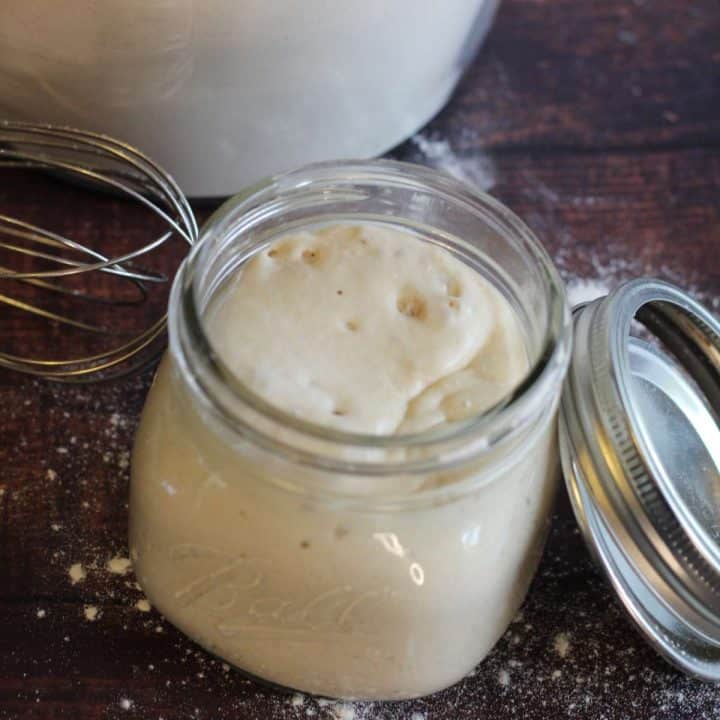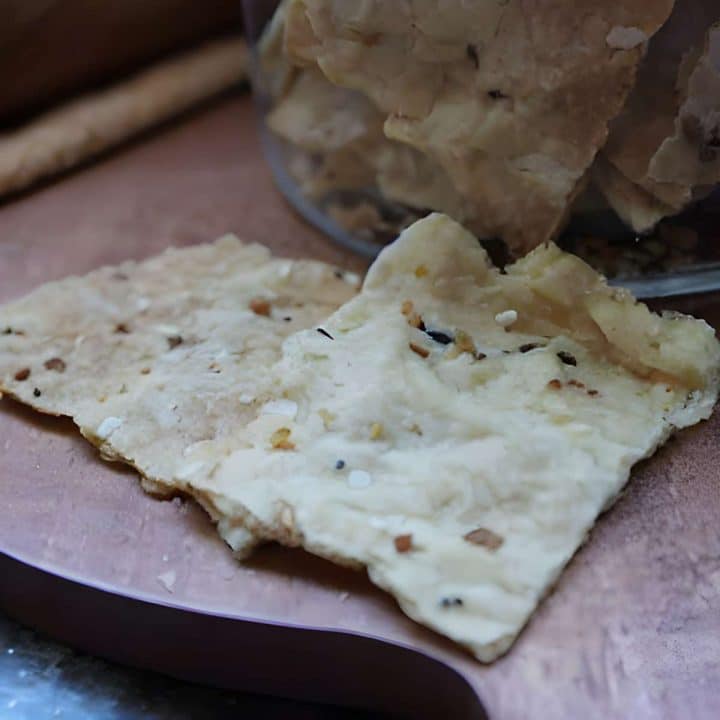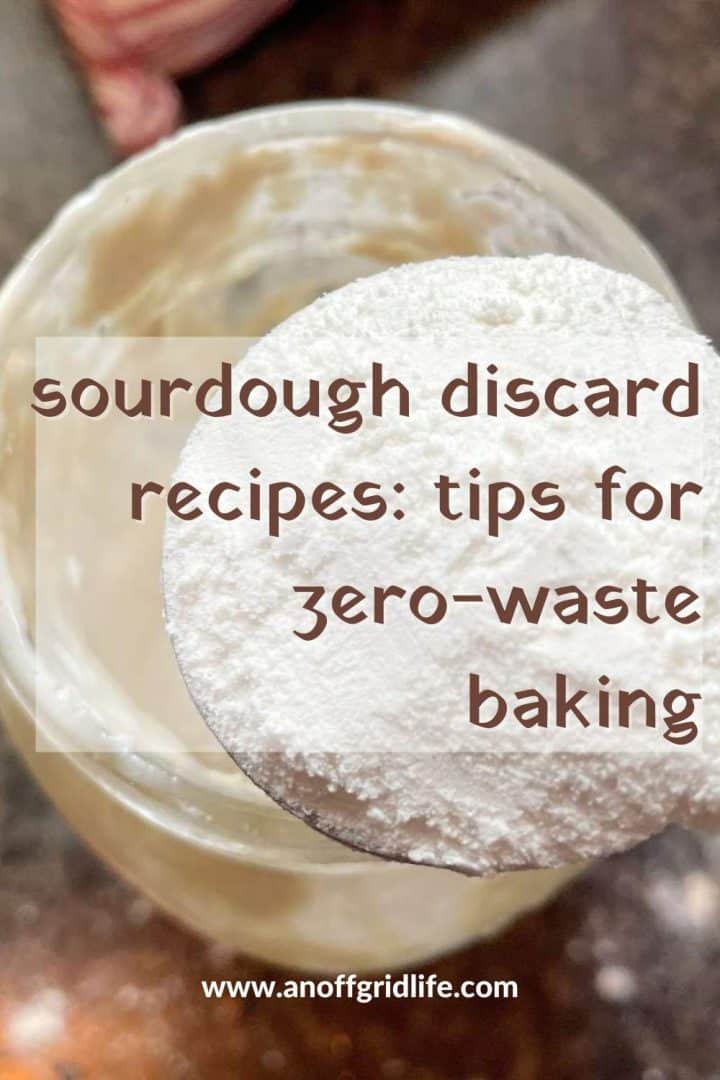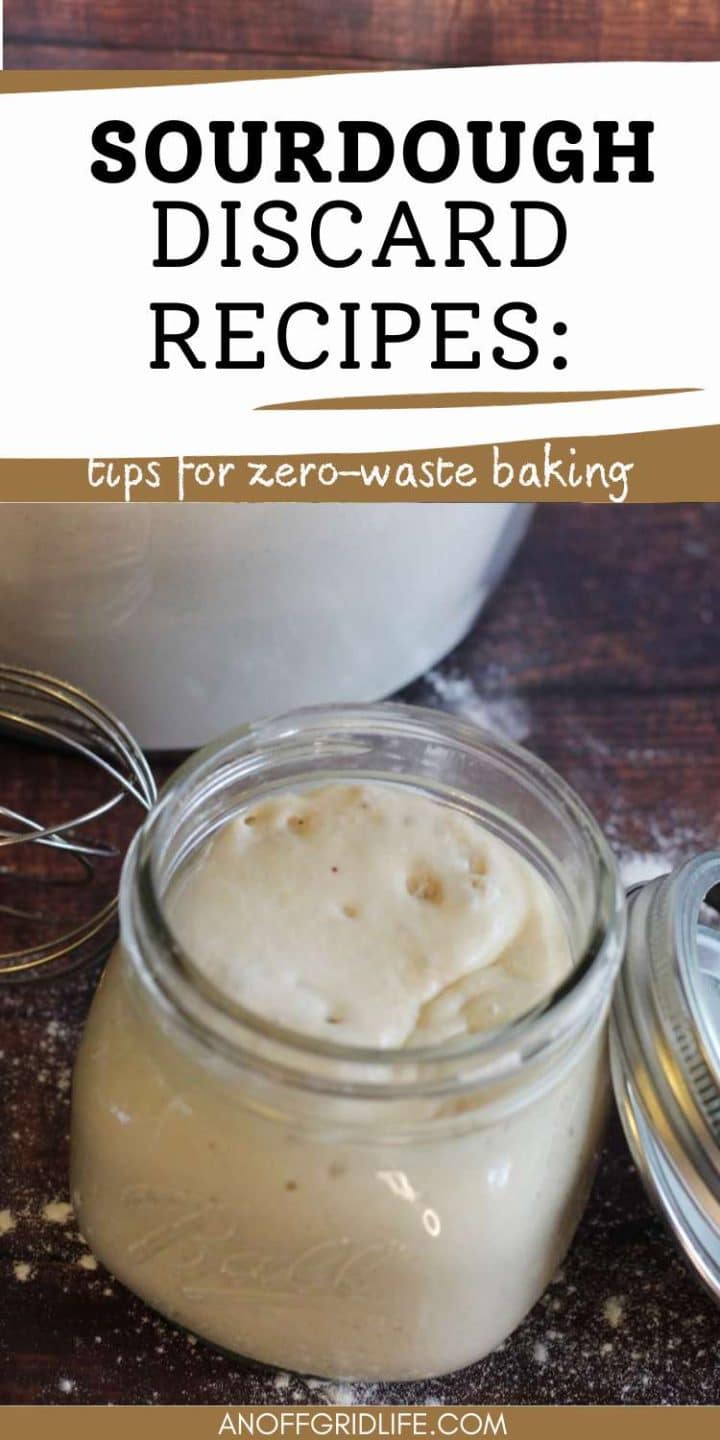Do you love baking with sourdough but hate tossing out the discard? Good news — use your excess sourdough to bake delicious new sourdough discard recipes, and reduce kitchen waste.

Estimated reading time: 9 minutes
Sourdough discard, often overlooked, is a versatile ingredient in baking. Whether you're just starting your sourdough journey or an experienced baker, put your excess starter to good use and use these sourdough discard tips to enhance your baking.
Demystifying sourdough discard
Sourdough is a fermented mixture of water and flour that produces natural yeast. Recipes made with sourdough starter rise naturally. Using sourdough discard in your weekly meal planning minimizes kitchen waste and is a great way to enrich baked goods with an unusually tangy flavor.
The sourdough starter is the original fermented amount of water and flour, and baking with an active sourdough starter requires feeding the starter regularly with additional fresh flour and a little water. However, it grows if you don't remove a portion of the starter each time you feed it. So if you don't bake regularly, you will have an excess of starter each time you remove some as part of the feeding process.
Sourdough discard refers to the portion of sourdough starter removed before feeding the sourdough, a fermented blend of flour, water, and natural yeasts. And since we started baking Dutch oven sourdough bread regularly, we have a ton of discard!
7 sourdough discard secrets

This flavorful fermented mixture adds depth and tang to various recipes. Far from being just waste, sourdough discard offers many possibilities for creating new sourdough discard recipes. These seven baking tips teach you to make the most of your sourdough discard.
Room temperature discard
For best baking results, use sourdough discard at room temperature. Cold discard straight from the fridge may slow the fermentation process and negatively impact the rise of your baked goods.
Allowing your extra sourdough starter to come to room temperature lets it blend more seamlessly with other ingredients, helping to create a consistent texture and flavor in your bakes.
Liquid consistency with whole wheat flour
When baking with whole wheat flour in your recipes, consider the consistency of your sourdough discard. You may need to adjust the amount of flour used.
You'll need to use a more liquid sourdough discard than you would with all purpose flour. Whole wheat flour absorbs more moisture, and the thinner discard helps maintain moisture in your dough and helps to avoid a dry finished product.
Tangy flavor profile
Using leftover sourdough discard gives your recipes a distinct flavor that is more pronounced than regular sourdough starters. This characteristic sourness adds a unique depth to baked goods, making them stand out with a gourmet twist. Remember to pair your sourdough recipes with complementary flavors, such as garlic, rosemary or thyme.
"I love making sourdough bread, but to keep my starter fed means that I always have plenty of discard. I keep that and use it in many other recipes where it adds a fabulous tang that makes them even more delicious. I love to use it in everything from chocolate chip cookies to pizza dough to brownies and even more. Don't toss your discard!"
— Michelle Price, Honest and Truly
Substituting discard for sourdough starter

Looking for easy sourdough discard recipes? Some of my best results have come from using my own sourdough starter discard in different ways. For example, I made sourdough banana bread by replacing one banana with ½ cup of discard using this Banana Flax Bread Recipe.
Another time, I reduced the water in my frugal homemade bread recipe (already a delicious recipe) and added ¼ cup of starter discard. That loaf of bread was fabulous, with a really unique flavor.
One of the easiest ways to do this involves using discard instead of sourdough as a substitute in regular sourdough recipes. That's how we developed our sourdough discard chocolate chip cookies recipe.
When doing so, keep a close eye on the hydration level of your discard and adjust the recipe's liquid content accordingly. You may find you need to add extra flour. This substitution reduces waste and adds a layer of flavor complexity to your bakes.
Sourdough discard in regular recipes
Don't limit your sourdough discard to just bread. It's a versatile addition to many recipes with simple ingredients, from sourdough discard biscuits, to sourdough pancakes. You can even make sourdough crackers and sourdough waffles. Plan to experiment with adding discard to to create delicious new recipes.
Storing sourdough discard
When removing the discard from the original starter, you may not want to bake with it immediately. Instead of throwing it out, store it in an airtight container in the fridge for up to a week. Quick tip: An easy way to store it involves freezing it. You may freeze your discard in small amounts for convenience in future baking.
Proper storage ensures your discard remains fresh and safe to use. If you don't own a freezer, consider dehydrating the sourdough starter. Doing so transforms the sourdough discard into a food with a long shelf life. Add water to rehydrate it when you want to bake.
Signs of over-aged sourdough discard
Learn the signs that sourdough discard has become too old to use. A pink or orange tint, a strong and unpleasant smell or any visible mold is a sure sign it's time to discard it. Using over-aged discard will negatively impact the flavor, quality and safety of your sourdough discard baked goods.
Sourdough discard baking techniques

Consider baking with sourdough, which is more of an art than a precise science. Feel free to experiment with using it in your favorite recipes.
Use sourdough discard to enhance the texture of baked goods as well as the flavor. For example, fold in the discard gently when making sourdough cinnamon rolls, sourdough donuts, or sourdough chocolate cake to produce softer textures and to maintain airiness. For a crispier texture, like in a crusty loaf of sourdough bread or a sourdough pie crust, a thinner discard yields a delightful crunch.
Baking with sourdough discard may require adjusting your baking times. Adding sourdough discard can change the moisture content in your dough or batter, so keep a close eye on your baking, checking for doneness a few minutes earlier or later than usual.
The unique tangy taste of sourdough starter discard recipes pairs well with many different dishes and meals. Bake it into breads and rolls to serve alongside your favorite soups or stews.
Add sourdough discard crackers to your holiday charcuterie board. Or bake a batch of sourdough discard muffins for a cozy winter breakfast.
Experiment with different pairings like herbs, spices or sweeteners. Eventually, you’ll discover your perfect sourdough discard flavor combination.
Sourdough Discard FAQs
I get questions about baking with sourdough discard regularly. Here are some of the most common.
Can You Freeze Your Sourdough Starter Discard?
Yes, you can freeze your sourdough starter discard. This is one of the best ways to manage excess sourdough starter without wasting it.
Simply place the leftover sourdough starter in an airtight container and freeze it. When you're ready to use it, thaw it overnight in the refrigerator.
Freezing your discard keeps it handy for recipes, ensuring you always have a portion of your starter available without maintaining an active starter daily.
How Long Does Sourdough Starter Last?
An unfed sourdough starter can last for quite a while when stored properly. In the fridge, a portion of your starter can remain viable for weeks. For longer periods, freezing is a better option.
However, remember that the longer the starter sits without feeding, the more time it may need to become active again. It's crucial to refresh it with regular feedings if you plan to bake with an active starter.
What Should Sourdough Starter Smell Like?
A healthy sourdough starter typically has a pleasant, slightly tangy aroma. This smell is a good indicator that your starter is active and thriving.
An off or unpleasant odor might signal that your starter has gone bad, or it could simply be a sign of an imbalance that a feeding might correct.
If your starter smells like acetone or strong vinegar, it may need feeding more often.
How Long Can Sourdough Starter Stay in the Fridge?
You can store sourdough starter in the fridge for a long time, especially if you have a lot of discard and don't plan to bake frequently. A stored starter can last for several weeks, even up to a month, without being fed.
This method works best for bakers who don’t use their starter daily. However, it's important to take it out and feed it at least once a week to maintain its health and vitality for the next time you bake.
Baking with sourdough discard takes patience and practice. Use your sourdough discard in current recipes, or look for new ones. Remember that sourdough discard is more than a byproduct of sourdough starter. It can become a signature ingredient in your kitchen.
Like this post? Save it, share it, and read it!




